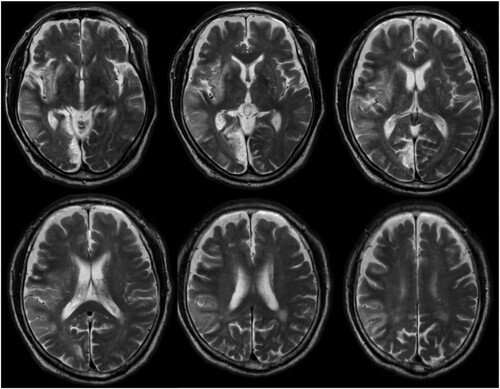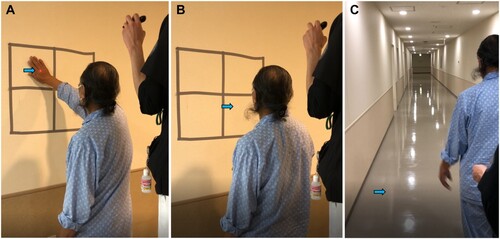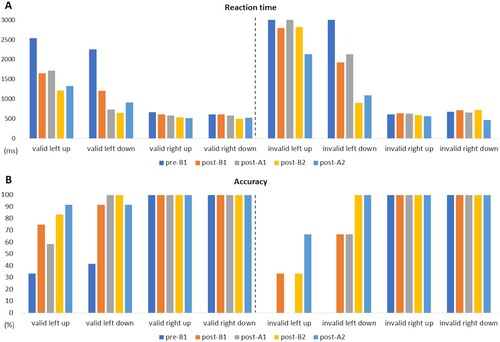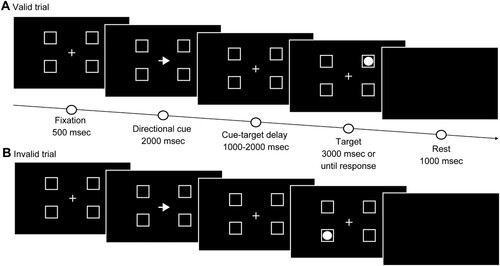Figures & data
Figure 1. Brain images of the study patient. T2-weighted magnetic resonance images of the patient (day 8 from stroke onset).

Figure 2. Experimental study procedure. BIT-c, Behavioural Inattention Test conventional test; CBS, Catherine Bergego Scale; CPT, conventional physical therapy; MPT, modified Posner task.

Figure 3. Standing and walking training using a laser pointer. (A) Standing training by touching when the light of a laser pointer is visible. (B) Standing training by giving an oral signal when the light of the laser pointer is visible. (C) Walking training by giving an oral signal when the light of the laser pointer is visible.

Table 1. Therapy time spent in each phase.
Table 2. Results of clinical assessments in each phase.
Table 3. Results of the Catherine Bergego Scale (CBS).
Figure 5. Results of the modified Posner task. Indicated on the Y-axis are (A) Reaction time (ms) and (B) accuracy (%).

Table 4. Results of the modified Posner task (MPT).
Data availability statement
The datasets used during this study are available from the corresponding author on reasonable request.

